What's New
Displaying results 381 - 390 of 4913

Resource | Publications,
Existing inequities have been widely acknowledged as barriers to achieving global and national goals and targets in HIV, TB and malaria programmes. These inequities have become even more pressing amidst the uncertainty of the COVID-19 pandemic. Yet, the magnitude and extent of health inequalities remain poorly documented and understood. This is the first monitoring report devoted to systematically assessing the global state of inequality in the three diseases, quantifying the latest situation of inequalities within countries and change over time. The report is timely due to the renewed emphasis on equity in prominent global initiatives and plans, including the United Nations 2030 Agenda for Sustainable Development, and global strategies to end AIDS, TB and malaria.
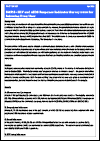
Resource | Fact Sheets,
In Hong Kong, the number of HIV cases transmitted through injecting drug use (IDU) has remained low up till now and contributed to less than 5% of all reported cases cumulatively. However, the potential risk of cluster outbreak and rapid upsurge of infection among the IDU population is always a concern. To monitor HIV-related risk behaviours and access to HIV testing services among IDU, this population has been included as one of the four at-risk populations in the HIV/AIDS Response Indicator Survey (HARiS) implemented since 2013. The eighth round of survey was conducted in 2020 via commissioning to the Department of Sociology, The University of Hong Kong.
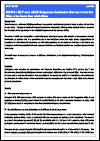
Resource | Fact Sheets,
The aims of HARiS were to establish a community-based behavioural survey with collection of standardized strategic information; to provide data of a pre-defined set of core indicators among the major at-risk subpopulations for surveillance of HIV-related risk behaviours and HIV testing patterns; and to enable the indicators to be tracked and compared over time for evaluation of the coverage and effectiveness of health-promotion and surveillance programmes in Hong Kong.

Resource | Fact Sheets,
The first case of HIV infection in Hong Kong was reported in 1984. As of 2020, the Department of Health has received a cumulative total of 10,785 reports of HIV infection and 2,230 AIDS cases under the voluntary and anonymous HIV/AIDS reporting system. The number of HIV reports in 2020 was 505, 10.6% decrease compared to the 565 cases in 2019. People infected with HIV progress to AIDS when they suffer from clinical complications of severe immunodeficiency due to HIV. In 2020, 112 AIDS reports were received. The most common illnesses presenting at AIDS were Pneumocystis pneumonia and tuberculosis.
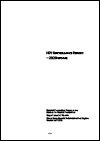
Resource | Publications,
This annual surveillance report is an initiative of Special Preventive Programme, Centre for Health Protection, Department of Health. The report aims to provide strategic information to facilitate planning of services and intervention activities for the prevention, care and control of HIV/AIDS.Following a commentary, data collected from the five main components of our surveillance programme (the HIV/AIDS voluntary reporting system, HIV prevalence surveys, sexually transmitted infections caseload statistics, behavioural studies and HIV-1 genotyping studies) were presented as tables and graphs. Findings of the risk behavioural surveys such as the HIV and AIDS Response Indicator Survey (HARiS) and other studies were also included in this report.
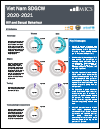
Resource | Fact Sheets,
The Viet Nam SDGCW survey 2020-2021 generated data for 169 indicators, of which 35 are national Sustainable Development Goal (SDG) indicators, making it a key source of data for monitoring Viet Nam’s progress towards achieving the SDGs and its national targets. This particular chapter provides data on HIV and Sexual Behaviour in Viet Nam.
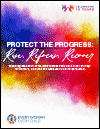
Resource | Publications,
Trends in women’s, children’s and adolescents’ health in the past 10 years: progress for many but not for all The past 10 years have been a time of progress for many of the world’s women, children and adolescents, and the Every Woman Every Child (EWEC) movement, launched in September 2010, has been one of the key multilateral drivers of progress in this regard. The movement’s mobilizing efforts have contributed to dramatic success throughout the decade in many indicators relevant to women’s, children’s and adolescents’ health, such as in reducing maternal and child mortality and in improving child nutrition and education. Yet, inequities have persisted across regions and countries, and within countries.

Resource | Publications,
HIV drug resistance (HIVDR) can compromise the effectiveness of antiretroviral therapy (ART) in reducing HIV incidence and HIV-associated morbidity and mortality. Minimizing the spread of HIVDR is a critical aspect of the broader global response to antimicrobial resistance.
WHO recommends that countries routinely implement nationally representative HIVDR surveys. The WHO HIV drug resistance report 2021 shows substantial progress in the implementation of HIVDR surveillance. Between 2014 and 2021, 56 countries implemented HIVDR surveys using WHO-recommended methods. The HIV drug resistance report 2021 summarizes findings from 38 countries that had finalized the surveys by the time of this report and shared data with WHO.

Resource | Publications,
This publication provides guidance for developing HIV prevention cascades using a basic approach, but allowing for flexibility and country/area-specific adaptations, based on differences in service delivery and data collection. It is intended to assist national and subnational HIV prevention programme managers—from government entities and nongovernmental organizations/community-based organizations (NGOs/CBOs)—involved in the implementation, administration, monitoring and evaluation of HIV prevention programmes. Prevention cascades can be part of an overall strategic information plan to monitor progress in addressing the HIV epidemic nationally and globally and to strengthen programmes.
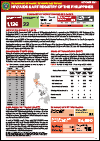
Resource | Fact Sheets,
In October 2021, there were 1,136a confirmed HIV-positive individuals reported to the HIV/AIDS & ART Registry of the Philippines (HARP) and were accounted to the total (92,096) reported cases since January 1984. Moreover, 12% (133) of individuals reported in October had clinical manifestations of advanced HIV infection at the time of testing.





